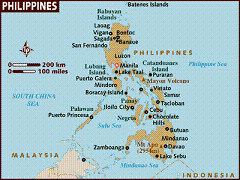Cyprus Destinations Guide

Cyprus is the third largest island in the Mediterranean Sea and attracts millions of tourists every year. Its historic ties with the United Kingdom make it a strong favourite among British holiday makers.
The charms of Cyprus are many and varied. For a start the weather is sunny and dry for most of the year, and the encircling sea is blue, clear and enticing. There are modern luxury hotels in the coastal resort towns, historic restored city precincts to explore, tavernas and nightlife aplenty. Cyprus has remote picturesque mountain villages and monasteries, beautiful churches, Crusader castles and fascinating museums. The local people are extremely welcoming of tourists, happy to share with them their innate love of life and camaraderie. In Cyprus it is possible to mingle with crowds, or seek isolation off the beaten track as the mood takes, even in peak holiday season. For this reason the island is also a favoured destination for honeymooners, a reputation enhanced by the fact that legend has it that Cyprus was where Aphrodite, Greek goddess of love, rose from the sea.
Climate
Cyprus destinations guide enjoys a Mediterranean climate, with abundant sunshine year round. Long dry summers and mild winters are separated by short autumn and spring seasons. Summer is a time of high temperatures with cloudless skies, but the sea breeze creates a pleasant atmosphere in the coastal areas. Winters are mild, with some rain and snow on Troodos Mountains.

Paphos
Capital of the west and positively teeming with history is Paphos, site of the island's second international airport. The resort town has as its focal point a charming fishing harbour by Paphos Fort, lined with open-air cafes and tavernas that serve a tempting menu of the day.
It was on Paphos shoreline that the mythological Goddess Aphrodite was born, a legend that spawned a massive wave of cult worship from neighbouring countries that lasted several centuries. The large rock that juts from the sea is known as 'Petra tou Romiou' - The Venus Rock - while the Baths of Aphrodite at Polis also echoes her apparent penchant for the island. At Palaepaphos, Kouklia lie the remains of the Goddess' earliest Sanctuary.
Another 'first' for Paphos was its early recognition of Christianity. While under Roman rule in 45 A.D., it was here that Saint Paul converted the first ruler to the faith.
The legacy from its remarkable history adds up to nothing less than an open museum. Among the treasures are the remarkable mosaics in the Houses of Dionysos, Theseus and Aion, beautifully preserved after 16 centuries under the soil. Then there are the mysterious vaults and caves, the Tombs of the Kings, the Pillar to which Saint Paul was allegedly tied and whipped, the ancient Odeon Theatre and other places of interest including the Byzantine Museum and the its Archaeological Museum
Larnaca town (Larnaka)
Larnaca, a town with an easy-going pace, has strong links to the past. In the heart of modern Larnaca one finds remains of the ancient city-kingdom of Kition, reminiscent of its glorious days. The Mycenaean Greeks fortified the town with cyclopean walls in the 12th century while the Phoenicians founded a powerful kingdom here in the 9th century. Kition is the birthplace of the philosopher Zeno, founder of the Stoic School, and it is here that Saint Lazarus came to live after his resurrection. In the 18th century it became a commercial centre and seat of the European consulates. The delightful Palm Trees Promenade, its fort, and its old quarters give Larnaka its unique character. The nearby salt lake is a favourite stop-over spot for thousands of migrant birds in winter, whilst on its edge in a tranquil setting stands a popular Muslim pilgrimage place.
The whole district of Larnaca has something special to offer the visitor, including Choirokoitia, the oldest Neolithic settlement on the island, Slavrovouni Monastery and the famous Church of Angeloktisti.
Limassol town
Successor to two city-kingdoms and host to a Royal Wedding in the Middle Ages, contemporary Limassol (Lemesos) stretches along the south coast. Proud of the spontaneous hospitality of its people, its archaeological sites, its mediaeval castles and its merry Carnival and Wine festivals, Lemesos is the island's most important tourist and wine industry centre. Hotels, restaurants and night spots abound along the beach whilst close by lie the pine-clad southern slopes of Troodos with the picturesque wine producing villages, the idyllic mountain resorts and the picturesque Pitsylia area.

Ayia Napa (Agia Napa)
The popular holiday resorts of Ayia Napa and Paralimni have been called a veritable paradise for anyone who loves the sea and water sports. The charming scenery includes the tiny fishing harbour of Ayia Napa, the mediaeval monastery at the heart of the village and the windmills and small churches in the surrounding villages which spread out to the areas of Paralimni and Protaras. This region is the main potato producing area on the island, and is known as "Kokkinochoria' which means 'red soil villages'. The villages of this area are equally known for their folk poets, who are regarded as the best on the island.

